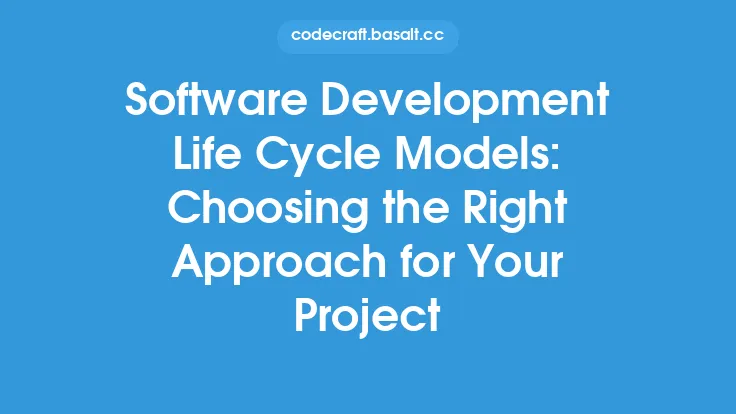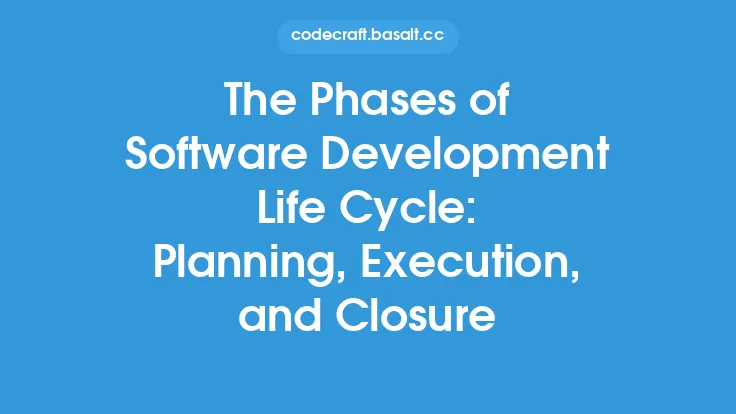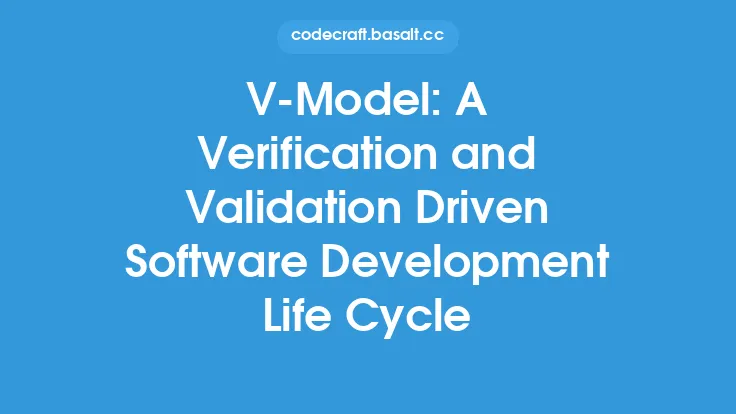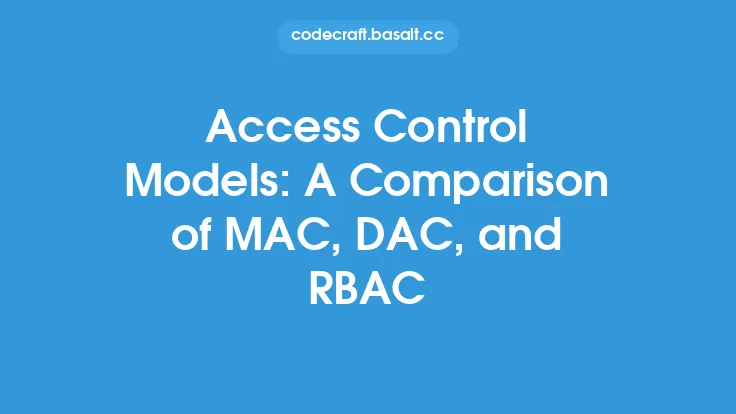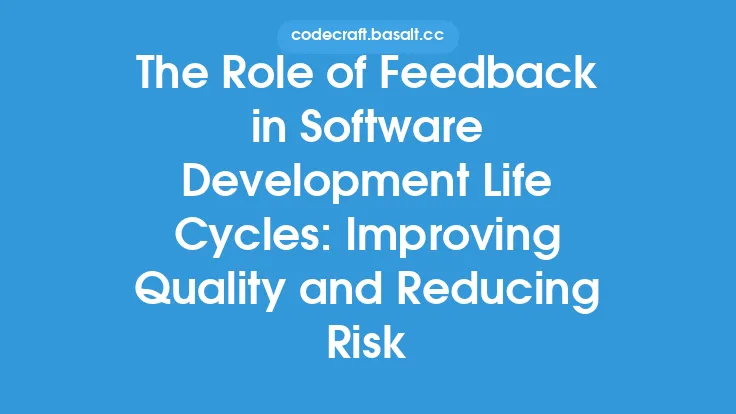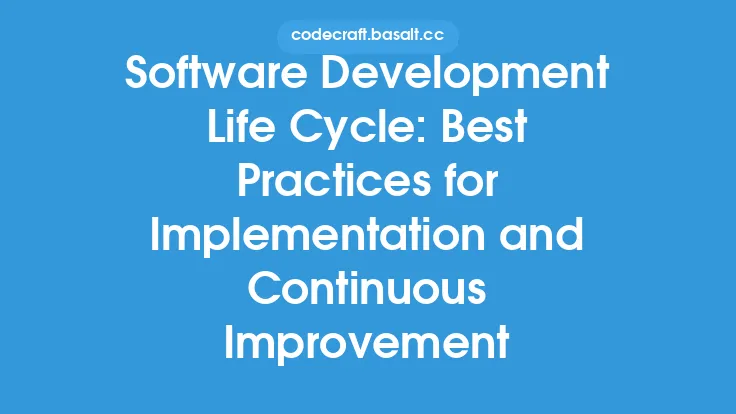The software development life cycle (SDLC) is a framework that outlines the stages and processes involved in developing software applications. Over the years, various SDLC models have emerged, each with its strengths, weaknesses, and use cases. In this article, we will delve into the different SDLC models, exploring their characteristics, advantages, and disadvantages, as well as the scenarios in which they are best applied.
Introduction to SDLC Models
SDLC models are essential in software development as they provide a structured approach to developing software applications. These models help developers to plan, design, implement, test, and maintain software applications in a systematic and efficient manner. The choice of SDLC model depends on the project's requirements, complexity, and the development team's experience and expertise. Some of the most commonly used SDLC models include the Waterfall model, V-Model, Spiral model, Incremental model, and Agile model.
Waterfall Model
The Waterfall model is a linear and sequential approach to software development. It involves a series of phases, including requirements gathering, design, implementation, testing, and maintenance. Each phase is completed before moving on to the next one, and there is no overlap between phases. The Waterfall model is suitable for projects with well-defined requirements and a fixed timeline. However, it can be inflexible and may not accommodate changes in requirements easily.
V-Model
The V-Model is a variation of the Waterfall model that emphasizes verification and validation activities. It involves a series of phases, including requirements gathering, design, implementation, testing, and maintenance, with a focus on testing and validation at each stage. The V-Model is suitable for projects that require a high level of reliability and safety, such as aerospace and defense applications.
Spiral Model
The Spiral model is an iterative and incremental approach to software development. It involves a series of cycles, each consisting of planning, design, implementation, and testing phases. The Spiral model is suitable for projects with uncertain or changing requirements, as it allows for flexibility and adaptability. However, it can be time-consuming and may require significant resources.
Incremental Model
The Incremental model is a variation of the Spiral model that involves developing software in increments. Each increment is designed, implemented, and tested separately, and the final product is the sum of all increments. The Incremental model is suitable for projects with well-defined requirements and a fixed timeline, as it allows for early delivery of functional software.
Agile Model
The Agile model is an iterative and incremental approach to software development that emphasizes flexibility and adaptability. It involves a series of sprints, each consisting of planning, design, implementation, and testing phases. The Agile model is suitable for projects with uncertain or changing requirements, as it allows for rapid response to change and continuous improvement.
Comparison of SDLC Models
Each SDLC model has its strengths and weaknesses, and the choice of model depends on the project's requirements and complexity. The Waterfall model is suitable for projects with well-defined requirements and a fixed timeline, while the V-Model is suitable for projects that require a high level of reliability and safety. The Spiral model and Agile model are suitable for projects with uncertain or changing requirements, as they allow for flexibility and adaptability. The Incremental model is suitable for projects with well-defined requirements and a fixed timeline, as it allows for early delivery of functional software.
Use Cases for SDLC Models
The choice of SDLC model depends on the project's requirements and complexity. For example, the Waterfall model is suitable for developing embedded systems, while the V-Model is suitable for developing safety-critical systems. The Spiral model and Agile model are suitable for developing web applications and mobile apps, as they require flexibility and adaptability. The Incremental model is suitable for developing enterprise software applications, as it allows for early delivery of functional software.
Best Practices for Implementing SDLC Models
Implementing an SDLC model requires careful planning and execution. Some best practices for implementing SDLC models include defining clear requirements, establishing a robust testing process, and ensuring continuous communication and feedback among team members. Additionally, it is essential to choose the right SDLC model for the project, based on its requirements and complexity.
Challenges and Limitations of SDLC Models
Each SDLC model has its challenges and limitations. For example, the Waterfall model can be inflexible and may not accommodate changes in requirements easily. The V-Model can be time-consuming and may require significant resources. The Spiral model and Agile model can be challenging to manage and require significant expertise and experience. The Incremental model can be difficult to plan and execute, as it requires careful planning and coordination.
Future of SDLC Models
The future of SDLC models is likely to be shaped by emerging trends and technologies, such as artificial intelligence, machine learning, and the Internet of Things (IoT). As software development becomes increasingly complex and demanding, SDLC models will need to adapt to accommodate new requirements and challenges. Additionally, the rise of DevOps and continuous integration and continuous deployment (CI/CD) is likely to influence the development of new SDLC models that emphasize speed, agility, and collaboration.
Conclusion
In conclusion, SDLC models are essential in software development, as they provide a structured approach to developing software applications. Each SDLC model has its strengths and weaknesses, and the choice of model depends on the project's requirements and complexity. By understanding the different SDLC models and their characteristics, developers can choose the right model for their project and ensure successful software development. Additionally, as software development continues to evolve, SDLC models will need to adapt to accommodate new requirements and challenges, ensuring that software applications are developed efficiently, effectively, and with high quality.
